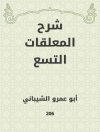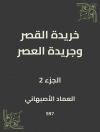E. Pauline Johnson’s ‘The White Wampum’ is a pioneering collection of poetry that intricately explores the experience of Indigenous identity in the context of early 20th-century Canada. With lyrical simplicity and a poignant authenticity, Johnson employs a blend of Romanticism and Indigenous oral tradition, crafting verses that resonate with both personal reflection and cultural heritage. The collection delves into themes of love, nature, and the struggle for cultural recognition, utilizing imagery and symbolism that vividly depict the beauty and complexity of Indigenous life. The literary context of the work highlights Johnson’s role in the burgeoning movement for Indigenous voices in Canadian literature during a time of rampant colonialism and cultural erasure. E. Pauline Johnson, also known as Tekahionwake, was a Mohawk writer born in 1861, whose bicultural upbringing deeply informed her creative pursuits. Raised in the Six Nations Reserve and educated in British-Canadian culture, Johnson’s writing reflects a unique confluence of these worlds. Her work sought not only to entertain but also to elevate Indigenous narratives, offering a powerful assertion of her identity and heritage in a literary landscape dominated by European perspectives. ‘The White Wampum’ is a must-read for those interested in Indigenous literature and the historical context of Canadian poetry. Johnson’s evocative language and profound insights make this collection a rich resource for understanding the intersections of identity and artistry. Readers will find themselves captivated by her ability to bridge cultures and articulate the essence of the Indigenous experience.
About the author
E. Pauline Johnson, also known by her Mohawk name Tekahionwake, was a poet, writer, and performer of considerable note in the late 19th and early 20th centuries. Johnson, of Mohawk and English heritage, was born on March 10, 1861, on the Six Nations Reserve in Canada, and she leveraged her mixed ancestry to bridge cultural divides through literature and public performance. She was a pioneering figure for Indigenous peoples, especially in the realm of literature, where her voices both challenged and embraced the literary conventions of her time. Johnson published several works during her lifetime, but ‘The White Wampum’, released in 1895, stands out as her first collection of poetry, unveiling her deft movement between the worlds of her heritage. This body of work earned her critical praise for its lyrical quality and poignant reflections on Indigenous identity, nature, and spirituality. Throughout her career, Johnson toured extensively, captivating audiences with her oratory skill and dramatic recitations. Not bound solely to the written word, her performances often featured her own poetry set against a carefully crafted persona that merged her Indigenous and European backgrounds. She passed away on March 7, 1913, leaving behind a legacy of resilience, artistic prowess, and an invaluable cultural bridge that is still celebrated in Canadian literary history.












